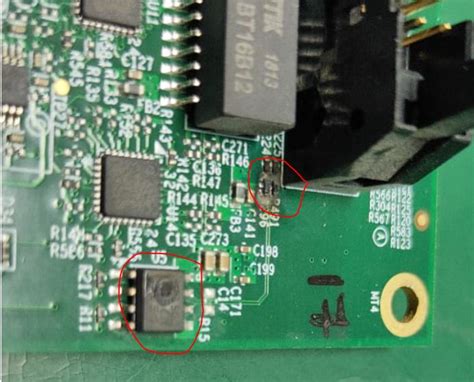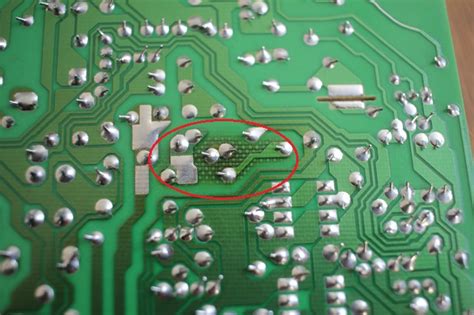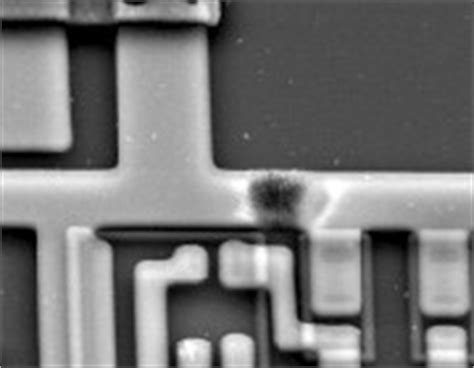Understanding IC damage on iPhones
Integrated circuits (ICs) are crucial components in modern electronic devices, including iPhones. These tiny chips are responsible for processing and controlling various functions within the device. However, ICs are susceptible to damage, which can lead to malfunctions or complete failure of the iPhone. In this article, we will explore the common causes of IC damage on iPhones and how to prevent them.
What are integrated circuits (ICs)?
Integrated circuits, also known as microchips, are miniaturized electronic circuits that consist of transistors, resistors, capacitors, and other components. These components are fabricated onto a single semiconductor substrate, typically made of silicon. ICs are designed to perform specific functions within electronic devices, such as processing data, controlling power, or managing communication between components.
The role of ICs in iPhones
In iPhones, ICs play a vital role in enabling various features and functions. Some of the essential ICs found in iPhones include:
- A-series processor: This is the main processing unit of the iPhone, responsible for running applications and managing overall device performance.
- Baseband processor: This IC handles cellular communication, enabling the iPhone to connect to mobile networks for calls, texts, and data.
- Power management IC (PMIC): This chip manages the iPhone’s power distribution, ensuring that each component receives the appropriate voltage and current.
- NFC controller: This IC enables Near Field Communication (NFC) functionality, which is used for features like Apple Pay.
Common causes of IC damage on iPhones
1. Physical damage
One of the most common causes of IC damage on iPhones is physical damage. This can occur due to various reasons, such as:
Drops and impacts
When an iPhone is dropped or subjected to a strong impact, the sudden force can cause the delicate ICs to crack, dislodge, or become disconnected from the circuit board. Even if the external casing of the iPhone appears undamaged, internal components like ICs can still be affected.
Bending and flexing
iPhones are designed to be slim and portable, but this also makes them susceptible to bending and flexing. When an iPhone is subjected to excessive bending or flexing, the circuit board and its components, including ICs, can be strained and damaged.
Pressure and compression
Applying excessive pressure or compression to an iPhone can also lead to IC damage. This can happen when the device is sat on, stepped on, or subjected to a heavy object.
2. Liquid damage
Another common cause of IC damage on iPhones is liquid damage. When liquid comes into contact with the iPhone’s internal components, it can cause short-circuits, corrosion, and oxidation, which can lead to IC Failure.
Water exposure
iPhones are resistant to water to a certain degree, but prolonged exposure or submersion can still cause damage. When water seeps into the device, it can reach the ICs and cause short-circuits or corrosion.
Other liquids
In addition to water, other liquids like soda, coffee, or chemicals can also damage ICs if they come into contact with the iPhone’s internal components. These liquids can be more corrosive than water and cause more severe damage.
3. Overheating
ICs generate heat during operation, and iPhones are designed to dissipate this heat effectively. However, if the device is subjected to excessive heat or if the heat dissipation mechanisms fail, it can lead to IC damage.
Prolonged exposure to high temperatures
When an iPhone is left in a hot environment, such as direct sunlight or inside a parked car on a hot day, the internal temperature can rise to dangerous levels. This can cause the ICs to overheat and suffer damage.
Intensive use
Running demanding applications or games for extended periods can cause the iPhone’s ICs to generate more heat than usual. If the device is unable to dissipate this heat effectively, it can lead to IC damage.
Charging issues
Using unauthorized or faulty chargers can cause the iPhone to overheat during charging. This can damage the ICs responsible for power management and other functions.
4. Electrostatic discharge (ESD)
Electrostatic discharge (ESD) occurs when a sudden flow of electricity passes through the iPhone, often due to static buildup on the user or the environment. This can cause damage to the sensitive ICs within the device.
Handling the iPhone without proper grounding
When handling an iPhone, it is essential to ensure that you are properly grounded to avoid transferring static electricity to the device. This is particularly important when replacing or repairing internal components.
Exposing the iPhone to static-prone environments
Some environments, such as carpeted rooms or areas with low humidity, are more prone to static buildup. Using an iPhone in these environments without proper precautions can increase the risk of ESD damage.
5. Manufacturing defects
In rare cases, IC damage can be caused by manufacturing defects. These defects can be due to issues in the fabrication process or the use of substandard materials.
Faulty IC fabrication
If an IC is not fabricated correctly, it may have inherent weaknesses or vulnerabilities that can lead to premature failure or damage.
Substandard materials
Using substandard materials in the production of ICs can also lead to damage. These materials may not have the required properties to withstand the normal operating conditions of the iPhone.

Symptoms of IC damage on iPhones
When an iPhone suffers from IC damage, it can exhibit various symptoms depending on the affected chip and the extent of the damage. Some common symptoms include:
- No power: If the power management IC is damaged, the iPhone may not turn on or may experience sudden shutdowns.
- Display issues: Damage to the display driver IC can cause screen abnormalities, such as flickering, distortion, or a completely non-functional display.
- Touch problems: If the touch controller IC is affected, the iPhone may experience unresponsive or erratic touch input.
- Connectivity issues: A damaged baseband processor can lead to problems with cellular connectivity, such as dropped calls, poor reception, or the inability to connect to mobile networks.
- Battery problems: IC damage can also cause battery issues, such as rapid draining or the inability to charge.
| Symptom | Potential Cause |
|---|---|
| No power | Power management IC damage |
| Display issues | Display driver IC damage |
| Touch problems | Touch controller IC damage |
| Connectivity issues | Baseband processor damage |
| Battery problems | Power management IC or Charging IC damage |

Preventing IC damage on iPhones
To minimize the risk of IC damage on your iPhone, follow these preventive measures:
- Use a protective case: A high-quality case can help absorb impacts and prevent physical damage to your iPhone.
- Avoid exposing your iPhone to liquids: Keep your device away from water and other liquids. If your iPhone gets wet, turn it off immediately and allow it to dry thoroughly before attempting to use it again.
- Maintain a safe operating temperature: Avoid leaving your iPhone in hot environments and ensure proper ventilation during intensive use.
- Use authorized chargers and accessories: Only use chargers and accessories that are certified by Apple or reputable third-party manufacturers to avoid overheating and ESD issues.
- Handle your iPhone with care: Be mindful of how you handle your device, especially when replacing or repairing internal components. Always ensure proper grounding to prevent ESD damage.

Frequently Asked Questions (FAQ)
1. Can IC damage be repaired on an iPhone?
In some cases, IC damage can be repaired by skilled technicians using specialized equipment. However, the success of the repair depends on the extent of the damage and the specific IC affected. In severe cases, the Damaged IC may need to be replaced entirely.
2. Will Apple repair an iPhone with IC damage under warranty?
Apple’s warranty typically does not cover damage caused by accidents, liquid exposure, or unauthorized modifications. If the IC damage is determined to be caused by such factors, Apple may not repair the device under warranty. However, if the damage is due to a manufacturing defect, it may be covered.
3. How much does it cost to repair IC damage on an iPhone?
The cost of repairing IC damage on an iPhone can vary depending on the specific issue, the iPhone model, and the repair provider. In general, IC Repairs can be more expensive than other types of repairs due to the complexity and precision required. It is best to consult with a reputable repair service for an accurate estimate.
4. Can I prevent IC damage by using a waterproof case?
While a waterproof case can provide some protection against liquid damage, it is not a foolproof solution. Waterproof cases can still allow liquid to enter if they are not properly sealed or if they sustain damage. It is always best to avoid exposing your iPhone to liquids altogether.
5. How can I tell if my iPhone has IC damage?
If your iPhone exhibits any of the symptoms mentioned earlier, such as power issues, display problems, touch irregularities, connectivity issues, or battery problems, it may have IC damage. However, these symptoms can also be caused by other factors. To determine if IC damage is the culprit, it is best to have your iPhone diagnosed by a professional technician.
Conclusion
IC damage on iPhones can be caused by various factors, including physical damage, liquid exposure, overheating, electrostatic discharge, and manufacturing defects. By understanding these causes and taking appropriate preventive measures, you can help protect your iPhone from IC damage. If you suspect that your iPhone has suffered IC damage, it is essential to have it diagnosed and repaired by a skilled technician to prevent further damage and restore proper functionality.
